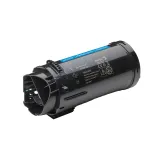
Better cost management and increased earnings are tried-and-true methods for business expansion, but well-executed mergers and acquisitions are capable of generating far greater top-line growth. As global competition intensifies in almost every market, investors and boards continue to push towards revenue and earnings growth this way.
However, while the potential benefits are significant, it is one of the most challenging tasks a company can undertake. Only 23% of acquisitions earn their cost of capital.
It can be helpful to think of business acquisitions through analogy – imagine putting together a picture puzzle consisting of thousands of pieces, but with a board of directors specifying how and where the pieces should fit. Keeping the acquisition process organized requires deeply planning and carefully articulating strategies in four key areas, outlined below.
Four Essential Elements of a Successful Merger or Acquisition
These four elements reflect the steps common to nearly every business acquisition:

• A growth strategy that aligns with overall corporate strategy.
• A well-defined and fast-paced diligence process.
• A detailed integration plan, organized in multiple phases.
• An integration execution that avoids customer loss and business interruption.
Planning for these elements properly reduces the many risks associated with fundamentally changing the structure of your organization. As noted by Forbes, today's mergers are riskier than those of yesteryear, and even small risks can affect the stability of the business acquisition process.
Motives Align Growth Strategy
Your combined growth strategy should be aligned with the overall corporate growth strategy of the acquiring company – or a compromise between both in the case of mergers. A well-crafted strategy provides a detailed roadmap for corporate development while highlighting the expected contribution and value of each party.
This strategy needs to identify and define the key drivers for growth, as well as constraints and obstacles that may pop up along the way. These are unique to each company, but generally follow a pattern based on the original motive for the merger or acquisition. Which of the following situations best describes your merger?

• You're buying a profitable business that is growing.
• You're buying a competitive business with similar capabilities to yours.
• You're buying a business that offers complementary services for expansion.

Your growth strategy has to take customer and stakeholder attitudes into account. Will buying a competitor help or hinder your position in the market? How loyal are customers to the brand you're buying? What value does the complementary service you're buying offer your stakeholders and how should they evaluate it? Consider the company's past as well: Cisco prefers to buy companies with a history of risk-taking.
These considerations will form the foundation of your growth strategy and guide the methods you use to integrate it with your overall corporate strategy.
Validate the Deal's Value Quickly and Thoroughly
During the due diligence phase, the board must examine the acquisition target company and determine what factors will affect its valuation. While learning about the target company, you may discover potential opportunities for structuring the transaction in mutually beneficial ways. You may also identify potential risks and negative synergies that need to be mitigated during the integration planning phase.
Overall, the goal of due diligence is to accurately evaluate what the target company has to offer and identify the best way to approach its acquisition. Significant risks and uncertainties may lead to large bid-ask spreads when financing the deal, and should be identified as soon as possible.
Another important element of due diligence is accurately determining the markets and consumer targets for each entity involved in the merger or acquisition. These elements, along with projections of tax liabilities and all other revenue-effecting factors, need to be combined into a comprehensive report.
Begin Planning for Integration Early
Ideally, the integration process should begin early on – even before due diligence is complete. At the very least, a roadmap for delivering promised synergies, efficiencies and growth should be laid out by the time due diligence is complete.
This plan should be developed through a partnership between the integration team and the business development team, and focus on establishing specific responsibilities for each phase of execution.

It must also address cultural differences between the target company and its acquirer and propose methods to satisfy existing customer and business partner relationships. Typically, the integration plan follows a simple format, starting with a schedule for the first post-acquisition day and moving onto a 100-day plan, first year plan, and so on.
Mitigate Risks During Integration
There are several risks that companies expose themselves to when undergoing mergers. Some of these include:

• Losing customers
• Interrupting business operations
• Losing key personnel
• Not reaching savings projections
These risks can be mitigated. Clear communication helps customers understand what to expect starting from Day 1 post-acquisition. Interim processes can be established for shipping disruptions common during acquisitions. Moving quickly and paying retention bonuses will keep competitors from successfully poaching talent.
Big Risks Come with Great Rewards
There is no faster way to obtain and establish a foothold in a new market than through mergers and acquisitions. Carefully plan through yours to make the most of the huge potential they offer.













Comments